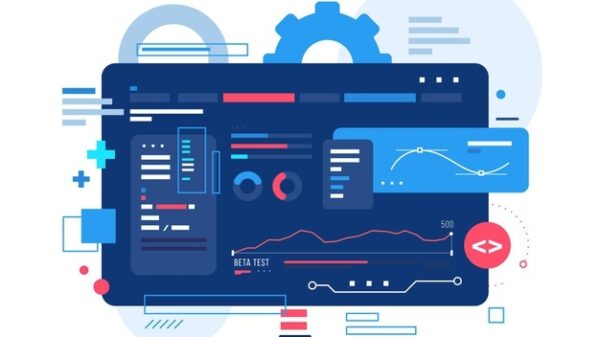The US markets forecast that the global cloud computing market will grow from $272 billion in 2018 to $623.3 billion in 2023. As a result of increasing data breaches, more and more companies are shifting to cloud storage. The work culture during this pandemic is showing an increased demand for cloud migration. However, there are certain risks linked to cloud migration. Most users are unaware of this. However, cloud storage has both advantages and vulnerabilities.
Here, we highlight seven risks of cloud migration and practices to address these vulnerabilities.
Cybersecurity Risks of Cloud Migration
There are several risks linked to cloud migration. All of these threats evolve over time. It is important to be aware of all the risks linked with cloud migration to ensure your online privacy.
Malware
Malware is one of the biggest migration risks in the cloud. It enters the cloud storage through various tactics. One of these popular methods is email phishing and the use of misconfigured storage servers.
As data and other valuable information continuously migrate to and from the cloud, the risk of malware attacking the cloud environment and client devices also increases. Experts believe that as cloud adoption increases, cloud malware will spread and multiply twice as much as before.
Malicious actors are becoming more sophisticated and employing new techniques to compromise user’s “security by developing malware that can efficiently disable cloud security products and exploit the flexibility of the cloud.
Compliance With Legal Requirements
The introduction of regulations such as GDPR and HIPAA makes compliance a difficult task. These government laws affect the accessibility of data in the cloud. Business owners are very concerned about this because it is quite difficult for them to have records of people accessing the information.
Hackers take advantage of this situation by accessing the cloud environment and stealing their valuable data, causing not only financial losses for companies but also damaging their reputations in the market and with customers. Second, companies also face penalties if they do not comply with the law. Therefore, it is important to comply with industry laws and regulations when moving your data to the cloud.
More Sensitivity and Pressure on The IT Teams
Cloud migration requires a high degree of complexity in the execution of IT functions. IT teams need to be well trained to operate this new model. IT teams should be able and skilled enough to handle and maintain data relocation within the cloud.
The complexity within the cloud is based on both encryption and key management services. Different CSPs use different tools and techniques to log into and monitor the cloud, which increases the complexity of using the cloud. Due to deployment methods and different policies, there is a risk of potential threats to the cloud environment. On the one hand, it puts pressure on IT teams to handle things appropriately, and on the other, it increases the vulnerability in the company’s cloud infrastructure, which invites cyber invaders.
Data Loss
Bad actors who compromise security and steal valuable data are a possibility for data loss. In the cloud network, there are other reasons that lead to complete data loss. Sometimes, it is the error of the cloud service provider that accidentally deletes your data. While, in other circumstances, natural disasters such as earthquakes, fires, and floods can damage important business data.
Preventing data loss is not the only task of the service provider. Users are equally responsible for this attitude. For example, you encrypt the data before uploading, but later lose the encryption key, then you are behind data loss. As a VPN is similarly used for anonymous downloading, it is also used to encrypt your data; you can use one to protect your data. In addition, it is important that you have a clear and complete understanding of the storage model you are using because if you do not, you may suffer data loss.
Vulnerable Applications
When it comes to security risks, one small mistake is enough to let you down. Whether you are using a system with firewalls and updated antivirus software, downloading an app from external sources can cause you a lot of trouble. Third-party applications pose a significant migration risk in the cloud. Downloading apps from these services invite cyber intruders to install spyware on your system to spy on your activities and gather information.
Ask your security experts to check the application for security before installing it, and then decide whether it fits on your network. Prevent employees from downloading any app, and if they need it, IT members should approve it in advance. This step minimizes the risk of vulnerable applications that can interfere with data migration to the cloud.
However, if an existing app has a fault, the IT team should not waste time and fix it quickly.
Account Hijacking
One of the biggest risks linked with cloud migration is hijacked accounts. If a cybercriminal gains access to your system through an employee account, he can access your information on your servers without your knowledge.
Cyber intruders gain first access to the cloud by using the techniques of password cracking and brute force attack. They think that your data is secured in the cloud, but a weak password can turn things around in favor of the hijacker.
To minimize this risk of cloud migration, train employees to reduce the risk of hijacked accounts. One such way is proper authorization management. It means that each employee has their own account and does not have access to unauthorized information. Even if an account is hijacked, less damage is done.
Poorly Configured Cloud Storage
A misconfigured cloud is a situation for cloud servers that makes them vulnerable to breaches. This problem is mainly due to insecure APIs. Cloud misconfigurations come in three forms:
- Default cloud security setting of the server
- Distorted data access: This happens when important data is left open without permission.
- Unprecedented access management means when unauthorized persons, such as an employee, unintentionally gain access to some confidential data.
When setting up a cloud server, check all cloud security configurations. Use some specialized tools to check the cloud security configurations. There are several third-party tools available that efficiently check security settings and detect potential threats before they can cause harm. Here you know more about CenturyLink internet to increase The Internet Speed and more.
Tips To Reduce Cloud Migration Risk
Cloud services have become mandatory for business processes. Cloud migration security is a necessity today as more and more companies shift to the cloud. In view of the security risks mentioned above, here are some more tips for improving cloud migration security.
- Using secure access management: Use specialized access management tools and policies to access the cloud environment, including enabling multifactor authentication features that notify you when someone tries to log into your account. Also, adopt the principle of restricted privileged accounts, where users are given the lowest privileges to reduce the chances of account hijacking.
- Preset security processes: Using an effective security automation process within your system, strengthens your detection and responsiveness and also saves you the dependence on manual responses.
- Use appropriate tools: Not all tools you use are the right ones for reducing the risks associated with cloud migration. Make sure you use the right tools for security monitoring, and they are active on all cloud resources.
- Use proactive simulations to practice different attack situations: it helps to detect every blind spot and solves every criminal problem that occurs during the investigation of the attack.
- Take a risk-based view: Check all the data and information you move in the cloud. Start with a risk-based visibility assessment of your entire environment and create a map to back up your cloud deployment.
Last Thoughts
The adoption of cloud technology offers companies the flexibility to stay ahead in the highly competitive business market. However, cloud migration poses risks to business data against possible cyber-attacks. By following the above-mentioned simple procedures, you protect your business data and minimize the risks of cloud migration.









